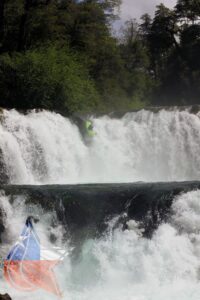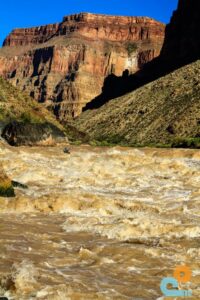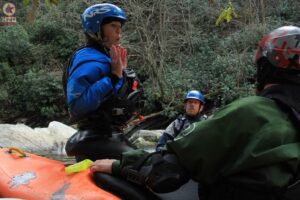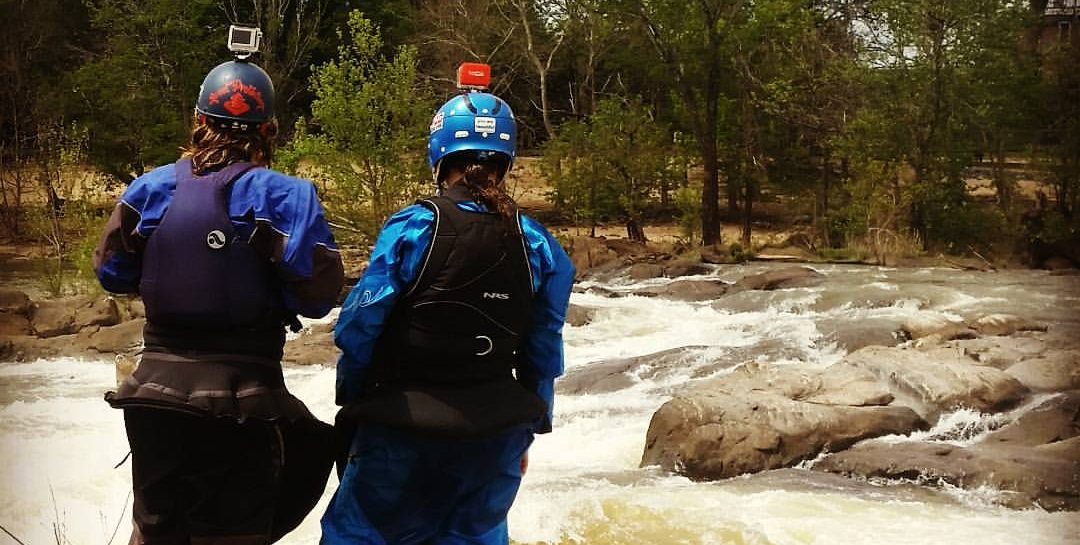Sometimes all we need in order to take the next step is a little change in perspective. Perhaps even more than technique or hard-skill improvement, paddlers are looking for a way to strengthen their nerve so as to execute those skills when it matters most with little question. Regardless of what’s holding you back from confidence and gusto on the water, changing the way we view and approach the river can one of our greatest tools in strengthening our steps forward in progress.
Below, you’ll find a list of experiences that have completely altered my perspective as a paddler and as an instructor. Experience remains our greatest teacher, and mental is a muscle that needs frequent exercise. Here’s your new workout:
- Run a waterfall. Nothing irrevocably changes your kayaking perspective like falling off a waterfall on to your head; your view and understanding of the river, the power of water, and your own abilities will be changed forever. Many of the waterfalls that us mere mortals can drop right out the gate are not very technical and, as a result, tend to be of relatively low consequence. As a result, you might realize that falling is one of the easiest things you’ll ever do as a paddler.

- Start falling here: Baby Falls, Bald River Falls; Tellico River | Ohiopyle Falls; Youghigeny River | ‘The 20 Footer;’ Rio Palguin | Moats Falls, Valley Falls; Tygart River
- Surf a big wave (or hole). The river world shrinks with a big wave surf. Even attempting to surf a big wave will start to turn down the volume on rapids and rivers alike. There’s nothing like getting tumbled a little bit to improve your awareness and sheer determination to figure out how to regain control.
- Start your surfing here: Chattahoochee River; Columbus, GA | Hell Hole; Ocoee River | Diagonal Ledges; Lower Gauley River | New River Dries; New River | Glenwood Springs; Colorado River
- Take a trip that forces you to paddle many days in a row. Remember everyone telling you about ‘butt-in-boat time’ when you first started kayaking, and how important it was to your progress? Frequency of craft never stops being important to your success because the truth is, we get rusty and we stop practicing how to use our nerve. Putting yourself in the position to paddle many days in a row will go a long way for your comfort, fitness, and confidence. When I took a trip down the Grand Canyon in the fall of 2015, I told myself, “If I don’t like big water after 21 days, I probably never will.” Turns out, three weeks of kayaking a high volume river was just what I needed for not only learning to understand big water, but learning to enjoy it, too.
- Start your paddling streak here: Grand Canyon; Arizona | Middle Fork of the Salmon River; Idaho | Overnight expeditions on the New or Chattooga Rivers | Tours of paddling hotspots like Western North Carolina, Colorado, and the Pacific Northwest | International trips to Europe, Canada, Africa, or South America.

- Start your paddling streak here: Grand Canyon; Arizona | Middle Fork of the Salmon River; Idaho | Overnight expeditions on the New or Chattooga Rivers | Tours of paddling hotspots like Western North Carolina, Colorado, and the Pacific Northwest | International trips to Europe, Canada, Africa, or South America.
- Compete. Whether you enter a competition with an end goal in mind or are just looking to have a little fun, competition can be a great way to put yourself to the test in a more controlled environment. Slalom, freestyle, or downriver events are great ways to give yourself something for which to train and work for. Pressure makes diamonds.
- Head to the start line here: Cuyahoga Falls Race; Cuyahoga River, OH | Ohiopyle Falls Race; Ohiopyle, PA | Tuck Fest; U.S. National Whitewater Center, NC | Jerry’s Baddle; Green River, NC | Any number of unofficial ‘Go Fast’ days on some Southeastern classics!
- Paddle high (or low) flows. Don’t be a level snob! So many incredible rivers hold value at higher and/or lower flows. If you use good judgement, you’ll be pleasantly surprised at how much fun you can have paddling something at base flows or nearing flood. Lack of water or an abundance of it doesn’t have to keep you on the couch, and an understanding of watersheds can aid you in your quest to explore flow ranges safely. Do your research, know your limits, and always have an out… after that, enjoy the ride and watch your perspective of what’s possible expand.
- Explore flow variations here: Upper Gauley, base flows; Summersville WV | Cheoah River, base flows; Stecoah, NC | Watauga Gorge, low flows; Boone, NC | Big Laurel & French Broad Rivers, high flows; Hot Springs, NC | Green River, high flows; Saluda, NC | Lower Wilson Creek Gorge, high flows; Collettsville, NC
- Go for a swim. This one is pretty easy. A great way to shift your perspective about what you’re kayaking is to swim it… on purpose! There’s a few pioneers of the sport that say you shouldn’t kayak what you aren’t willing to swim, and whether you totally buy in to that or not, there’s virtue to jumping in at the top and swimming to the bottom. Added bonus: it’s easy to forget that swimming is a skill and needs practice. Take the opportunity to swim rapids and get comfy navigating current out of your boat.
- Take the plunge here: With careful consideration and safety precautions, you get to be the judge of where your next dip will be.
- Teach someone. More than anything I’ve listed above, teaching has by far been the biggest perspective altering experience I’ve had in kayaking. Few endeavors test your mind, expose your weaknesses, refine your strengths, and build your confidence like taking someone under your wing and showing them the ropes. You learn how to speak with strength, how to give and take direction, how to make the best out of any circumstance, and how to do exactly what needs to be done in any situation. Through teaching and guiding, my river awareness has increased exponentially. I now see the river through the eyes of an instructor, and so few places are off-limits to me as we move downstream now as teaching requires you to be everywhere and go anywhere if your student requires it. Those people you see who seem to be able to be in just the right place at the right time, all the time? I’d be willing to bet they have a lot of experience teaching or at least guiding. They can anticipate, and they’ve gained the confidence and prowess to put themselves exactly where they need to be in order to help another. While teaching isn’t for everyone, there is no better way to forever change the way you look at yourself, your environment, and the people and w
 orld around you… in my mind, for the better.
orld around you… in my mind, for the better.
- Start teaching here: Find a willing friend, family member, or co-worker, take it seriously, and get started! | Knowing how to do something and knowing how to teach someone else how to do it are two different things. Learn to teach through instructor trainings!
